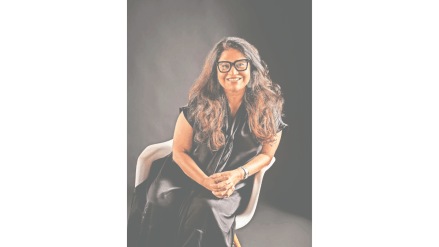When Godrej Consumer Products (GCPL) named former FCB India creative chairperson Swati Bhattacharya as the global head of its in-house creative studio, Godrej Creative Lab, it triggered a debate weighing the merits and demerits of working with an ad agency partner versus an internal creative team. Bhattacharya talks to Christina Moniz about her experience in an in-house creative agency, the opportunities across multiple markets that Godrej Consumer offers and the role of culture in advertising. Edited excerpts.
How different is the creative process in a company like GCPL compared with an ad agency?
It is no different from an agency in terms of the number of brands. GCPL has over 25 brands that operate in categories like hair care, soaps, deodorants and even condoms. We’re talking to different teams from R&D to sales and consumer insights. Having moved into an in-house agency role, I don’t feel like the canvas has become small. It is the opposite, in fact.
Very often, time management becomes a major issue in ad agencies, but that is not the case for us as an in-house creative team. We are our own clients, so unlike the agency way of doing things, we are close to the consumer all along the creative journey. This makes the process and our use of time a lot more efficient. There is also greater access to information, and the creative leader has a seat at the executive level.
Godrej Consumer has a host of established brands across categories. Which of those present the most exciting advertising opportunity?
The creative person looks at creative opportunity at a base level. It’s the same with me. Of course, brands like Cinthol, Godrej No 1 and Good Knight are important brands but there are also brands like Kamasutra, which have recently come into our fold which are fresh creative and cultural playgrounds. (The brand was acquired from Raymond in 2023.) Sexual wellness is a category in the service of the male gaze, and it needn’t be that way. We have a massive opportunity to talk to women through our brands.
What creative vision do you have for legacy brands like Cinthol and Good Knight?
Godrej Consumer Products has a portfolio of legacy brands with their own DNA and voice. I’ve spent the last few months getting under the skin of all these brands and getting to know their histories. Their presence in geographies like Africa, Argentina and Indonesia, has given me the opportunity to delve deeper into consumers in these markets besides the familiar Indian market. The world is an exciting place right now and there are far more things connecting people across cultures. So, my plan is to add new colour and context to this changing consumer landscape. There is so much potential in defining every part of brand experience, while staying true to the brand identity and who it serves.
What really sets this company apart are its humanitarian goals, and focus on weaving sustainability into their brands’ conception and journey. At a time when consumers are feeling the pressure of rising prices, to be able to give them a little more at an attractive price point, without adversely affecting their aspirations or being condescending, is a wonderful thing. That is what makes Godrej Consumer’s brands stand out. Brands like Cinthol, Godrej No. 1 and Good Knight are not built purely by their advertising. These products are made by a very generous maker. The consumer also realises that they are getting more from the product.
You’ve often spoken about the role of culture in advertising. How do you see this role evolving as digital media platforms take centre-stage?
For mass brands, TV still remains the cheapest way to reach maximum people. Godrej too has been traditional in its advertising, but things are changing now with digital media gathering more momentum. We will be looking at digital more seriously. There is, however, no difference between digital and TV storytelling. It’s merely the screen size that has changed because people are now living their lives on their phones. What we cannot afford to ignore is what gets the pulse of the people and ultimately, we need to look at the consumers that are buying our brands.
Culture is the thing that gives advertising its value or status, which allows it to sit alongside other storytellers. We are commercial artists after all. When our work is plugged into culture, our work becomes more powerful.
Creativity, innovation and culture are the three siblings that play together. When advertising manages to leverage all three, it hits gold and the consumer appreciates and embraces it. A good example of that was my work on the #NoConditionsApply campaign for Sindoor Khela while I was with FCB. The campaign changed the Bengali ritual from one of division to one of inclusion, and it was welcomed by the community.
